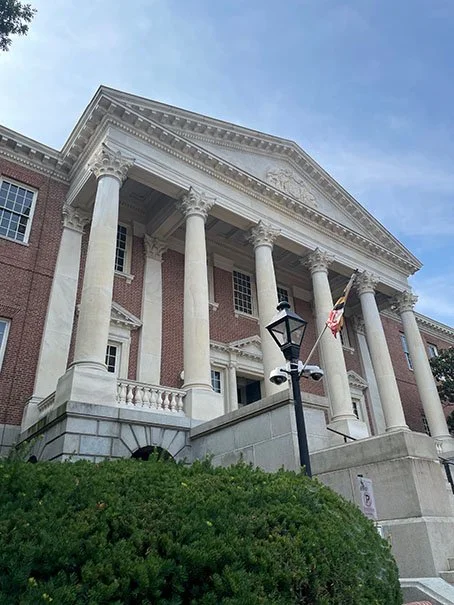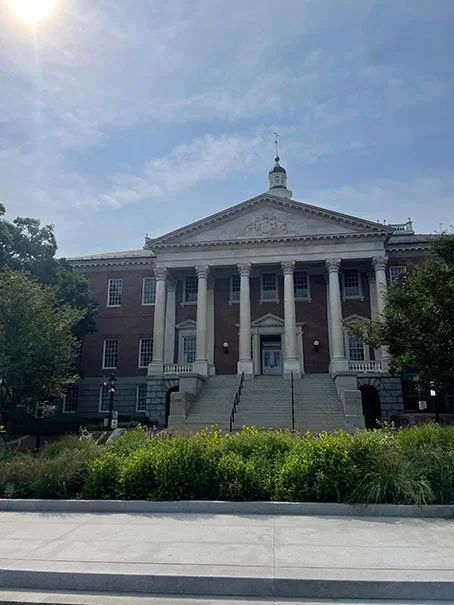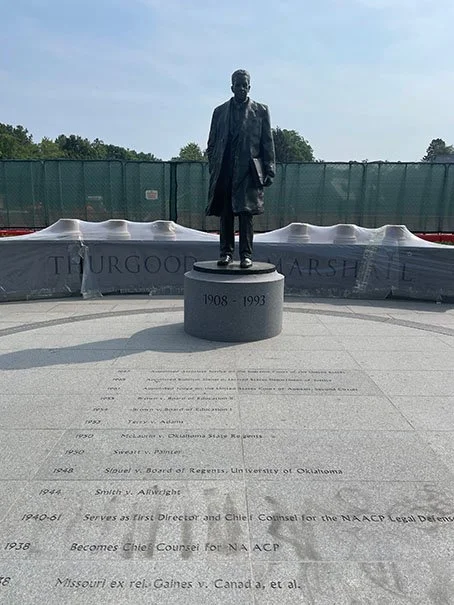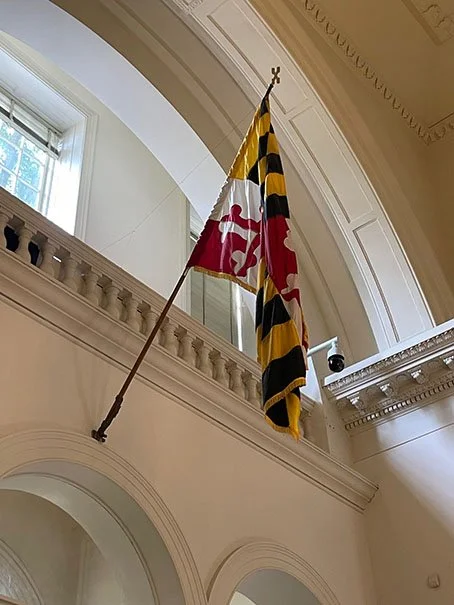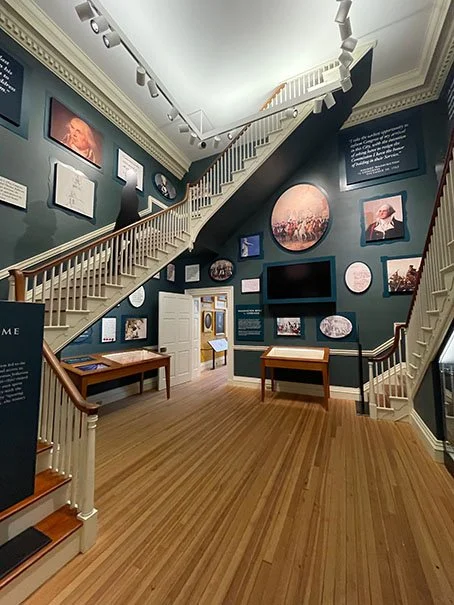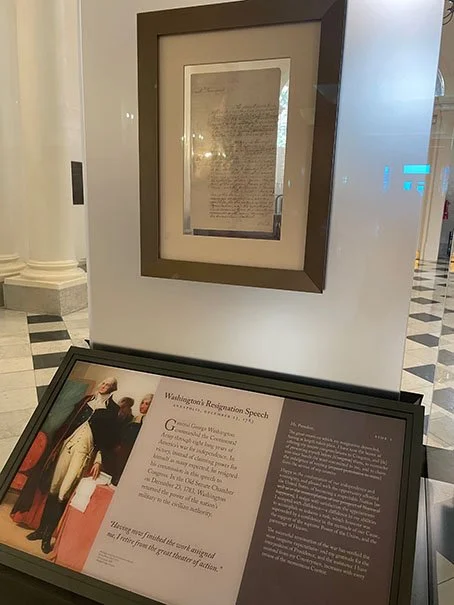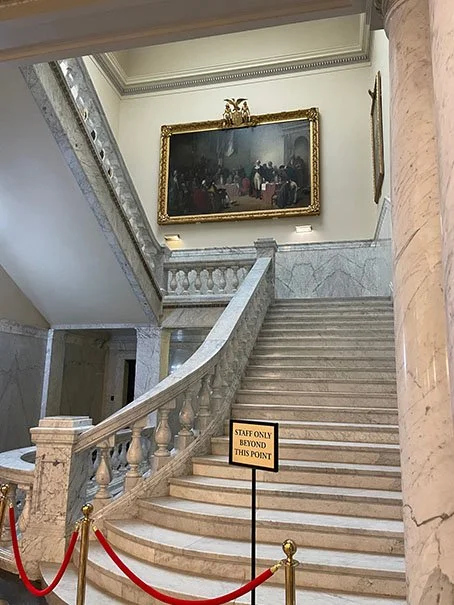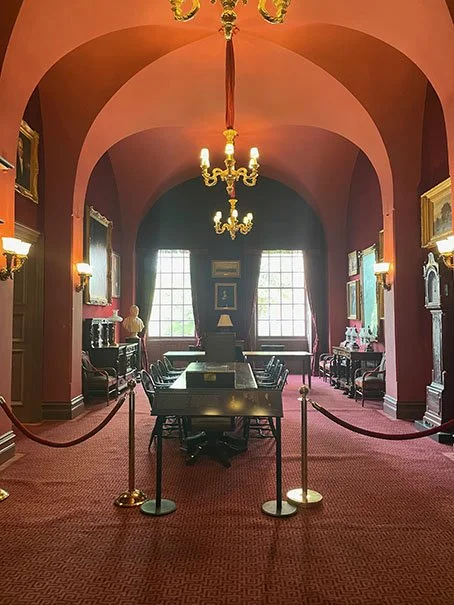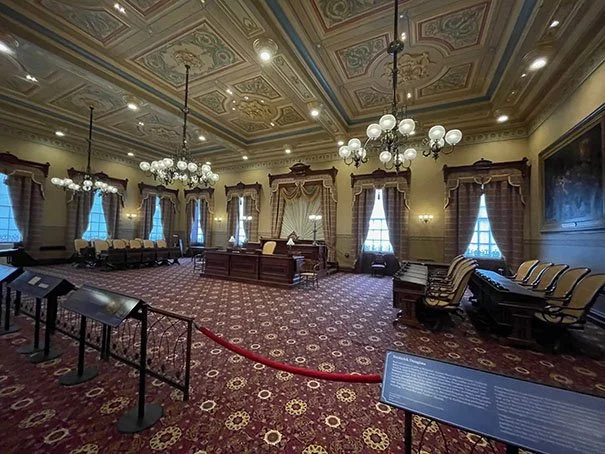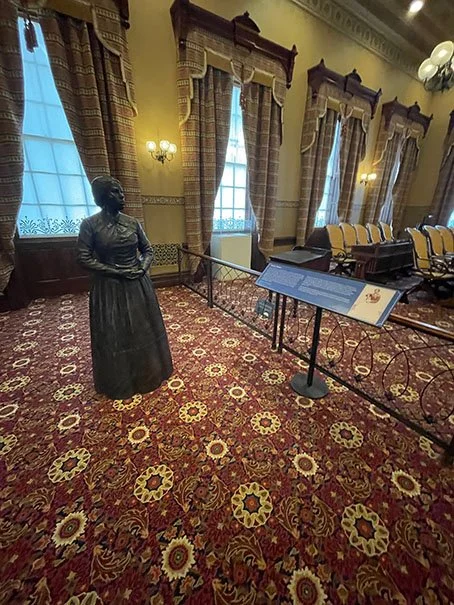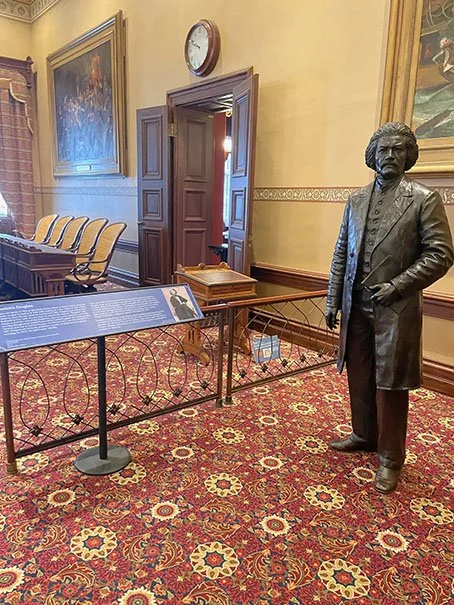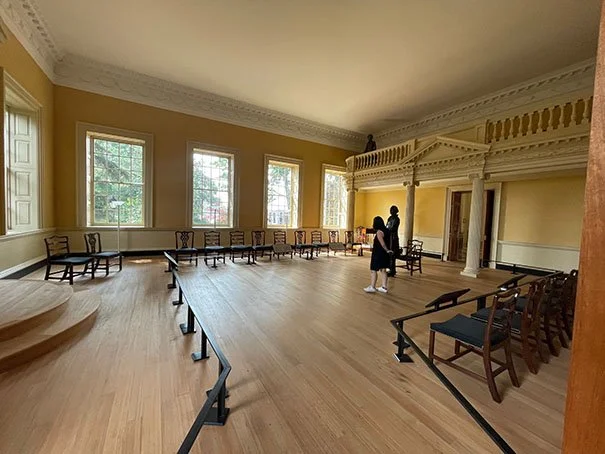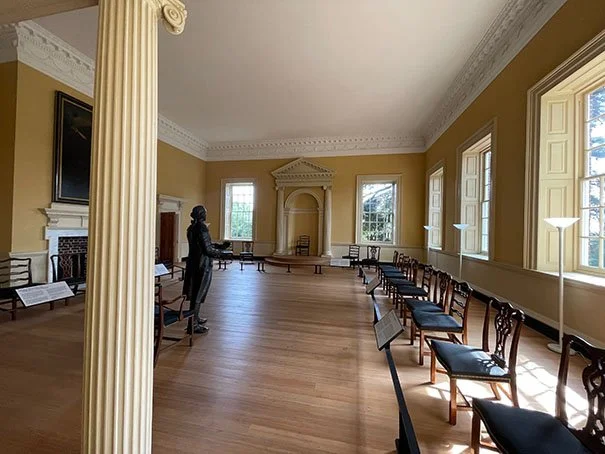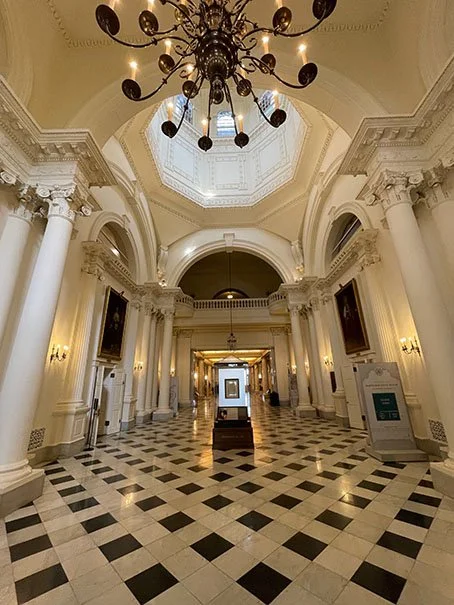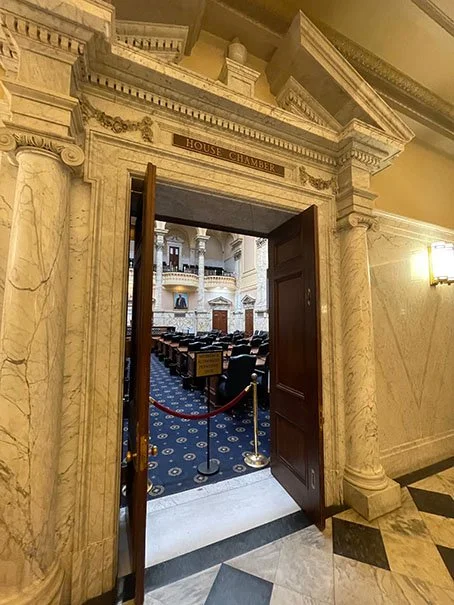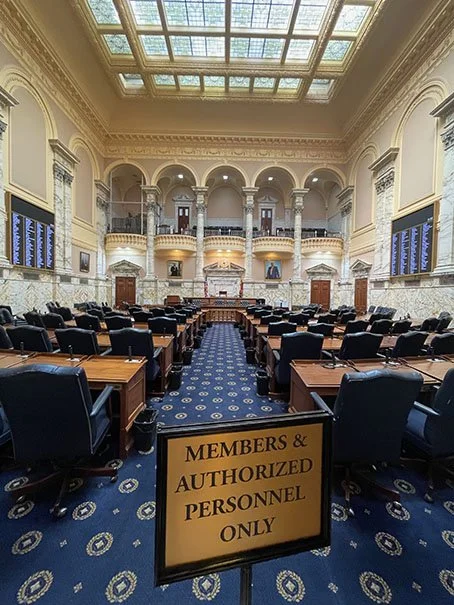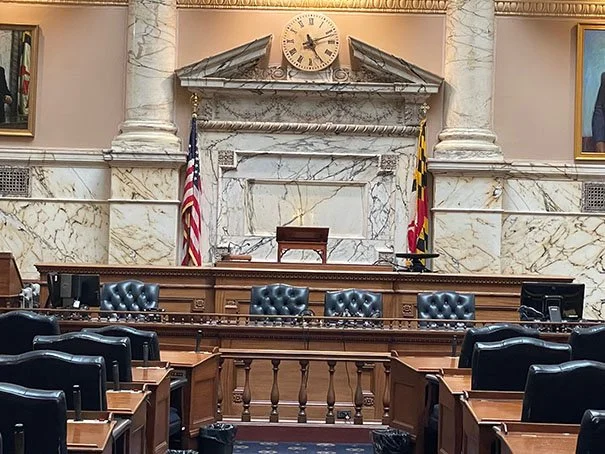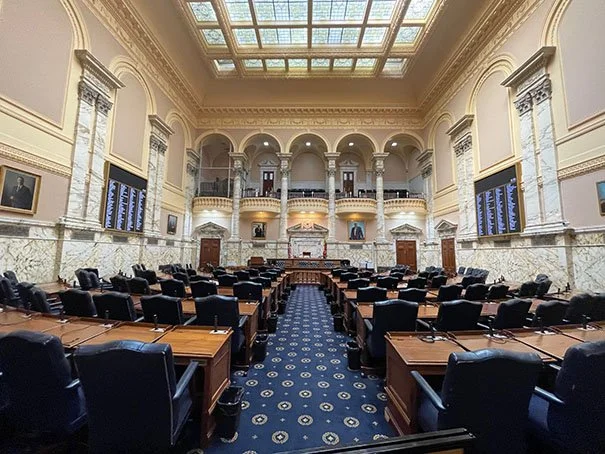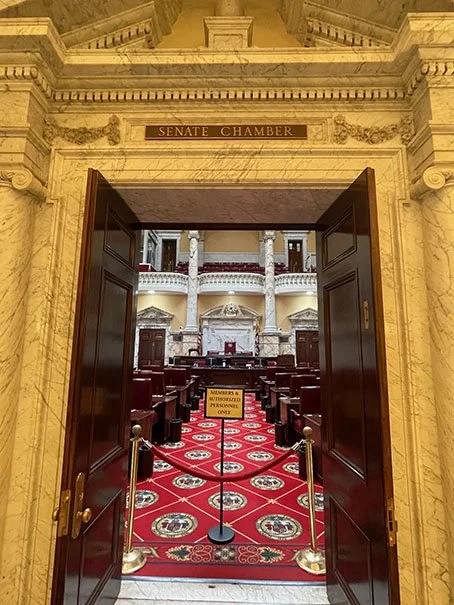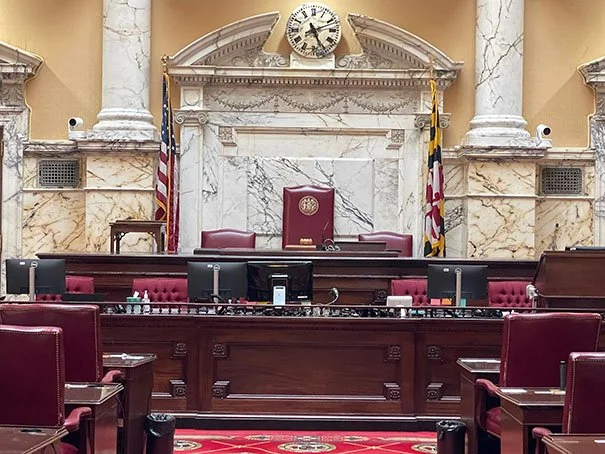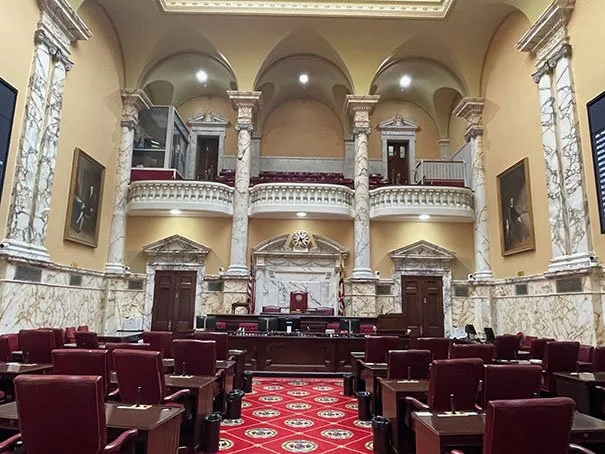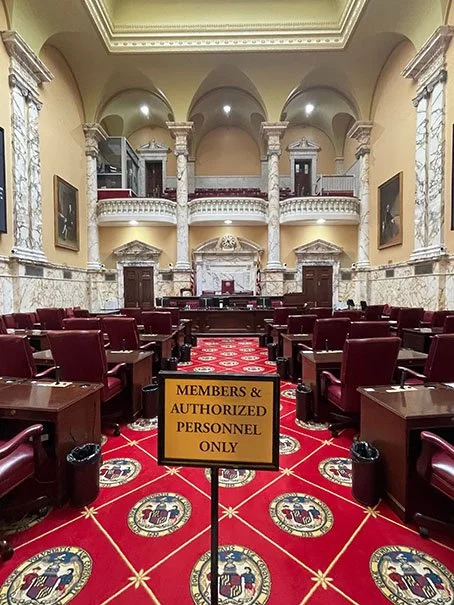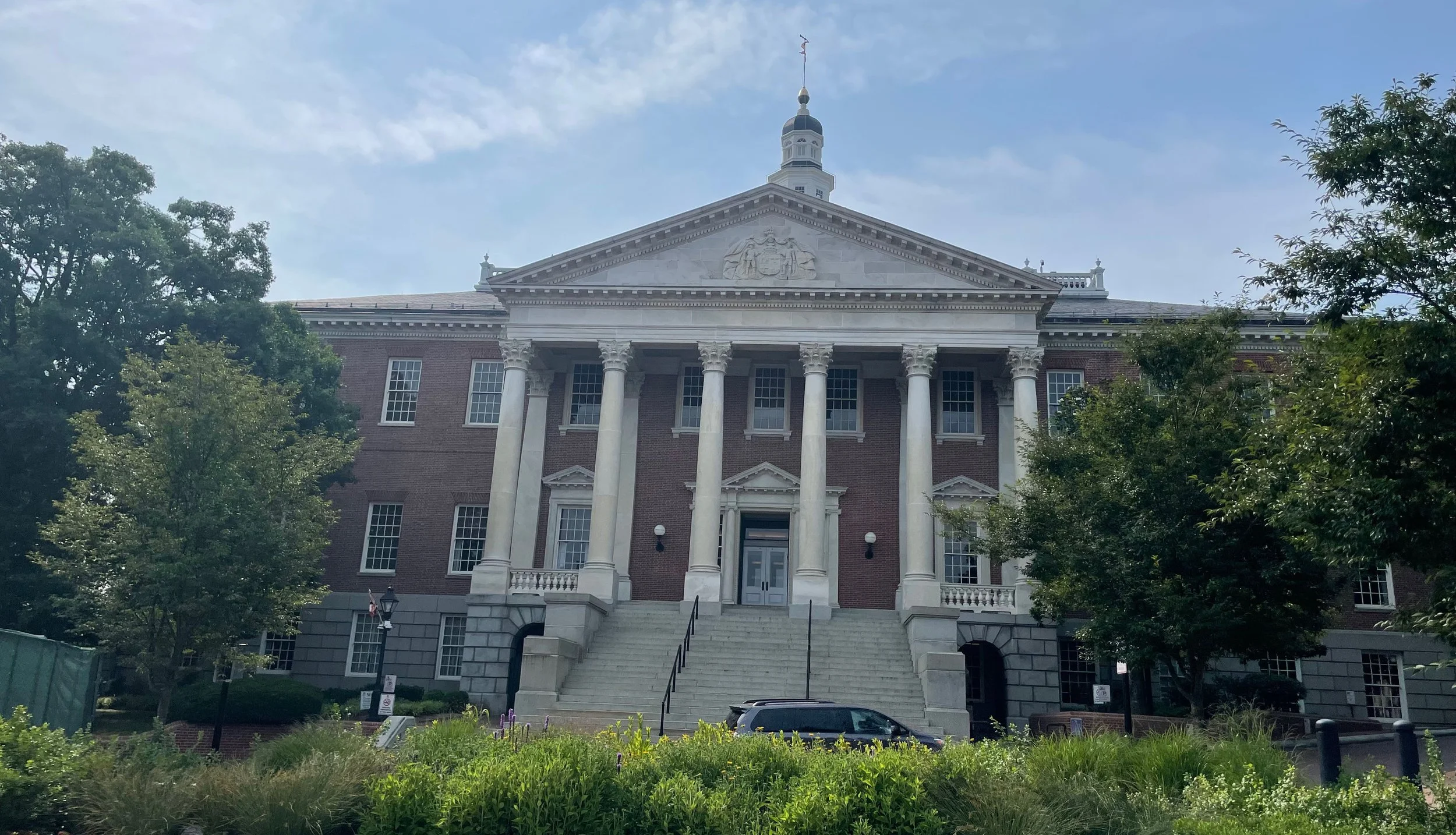
Maryland
Maryland State Flag (Flagpedia)
The Maryland State House was the first stop after picking my uncle up in West Virginia to visit the Atlantic and New England states. Located in historic downtown Annapolis, the Maryland State House is within walking distance of local shopping and restaurants as well as the United States Naval Academy.
Downtown Annapolis is very walkable, but things get busy later in the morning when shops start to open. We got an early start because we knew it would be a packed day, so we arrived around 8 a.m. when parking on the street was easy. Later in the day, we used the new (at the time) parking garage on Gorman Street to visit the rest of Annapolis.
Learn more about the Maryland State House history or plan your visit. You can also download the brochure Welcome to the Maryland State House (PDF) and print it to bring along.
The Maryland State House is the oldest state capitol building in continuous legislative use. The Old Senate and House of Delegates chambers are preserved under the same roof as the current chambers in the new wing.
A unique feature of the Maryland State House is the life-size bronze statues of historical figures, including George Washington, Harriet Tubman, and Frederick Douglass, placed in high-traffic areas of the old chambers.
Washington resigned his commission in the Continental Army in the Old Senate Chamber on 23 December 1783, setting precedent that the military should be under civilian authority. This was at the end of the Revolutionary War. His bronze statue helps us imagine the moment he said, “I’m out.” A copy of his resignation speech is displayed in the rotunda.
A bronze statue of Molly Ridout stands in the gallery above, where women sat because they were not allowed on the Senate floor. She provided a personal account of the speech that documents the event.
In the Old House Chamber are bronze statues of Maryland-born abolitionists Tubman and Douglass, both dedicated to freeing enslaved people.
The dome, completed in 1797, is the largest wooden dome in the United States built without nails. Instead, it’s held together with wooden pegs and iron straps (apparently nails were too mainstream). Topped with a lightning rod designed by Benjamin Franklin, it remains one of the most distinctive features of the building.
The Maryland State House is home to the Maryland Governor and Maryland General Assembly, which includes the Senate and House of Delegates.
The Stairwell Room, named for the stairwells leading to the aforementioned Old Senate Gallery and the dome, has exhibits dedicated to George Washington, Revolutionary Annapolis, the Treaty of Paris and Thomas Jefferson in Annapolis, and the 18th-century State House.
The adjoining Archives Room was originally a fireproof state records room; it now houses State House exhibits.
For such a small and walkable capital city, Annapolis packs in a lot of history—and the Maryland State House proves it. Between Washington’s resignation, bronze statues of heroes, and exhibits that span centuries, it’s worth an early morning start before the city wakes up.


